Pena Palace and the Moorish Castle (Castelo dos Mouros) aren’t very far from each other up in hilly Sintra. So close you can walk the narrow road for a few minutes to get from one to the other. Even if it starts to rain on you. We visited in the drizzle after our tour of Pena Palace.
Both sites were inspired by Romanticism, they say. But different takes on the ideal.
Pena Palace: Fancy Colorful Halls, The Romanticism of Kings.
Moorish Castle: Stony Ruins on High Hills, the Romanticism of Abandonment.
Romanticism guided the 19th-century quasi-redevelopment of the Moorish Castle, a ruin from Islamic times, modified after the Reconquista, abandoned and decaying by the time King Fernando II took an interest in 1840.
From the Sistema de Informação para o Património Arquitetónico on the Moorish Castle, machine translated:
“Military, medieval and romantic architecture. Castle with an irregular plan located on high ground, formed by two belts of walls, with the interior reinforced by five towers and several cubes with a quadrangular and circular plan and vertical elevations. The list includes a Visigothic chapel, rebuilt in the Romanesque period…
“The Moorish Castle, due to its geographical situation and robustness, was considered, together with that of Santarém, one of the main points of the military structure of Belata – a Muslim province that more or less corresponds to Ribatejo and Estremadura. The property underwent extensive renovations over time, with the character of a romantic ruin predominating…”
The rain added to the Moorish Castle’s romantic appeal, both in the poetic sense, and the sense that stirs amorous couples. If there were any couples around, that is; there weren’t many, or anyone else. Off the beaten path in this case turned out to be stony and steep and wet. Even so, worth the effort.
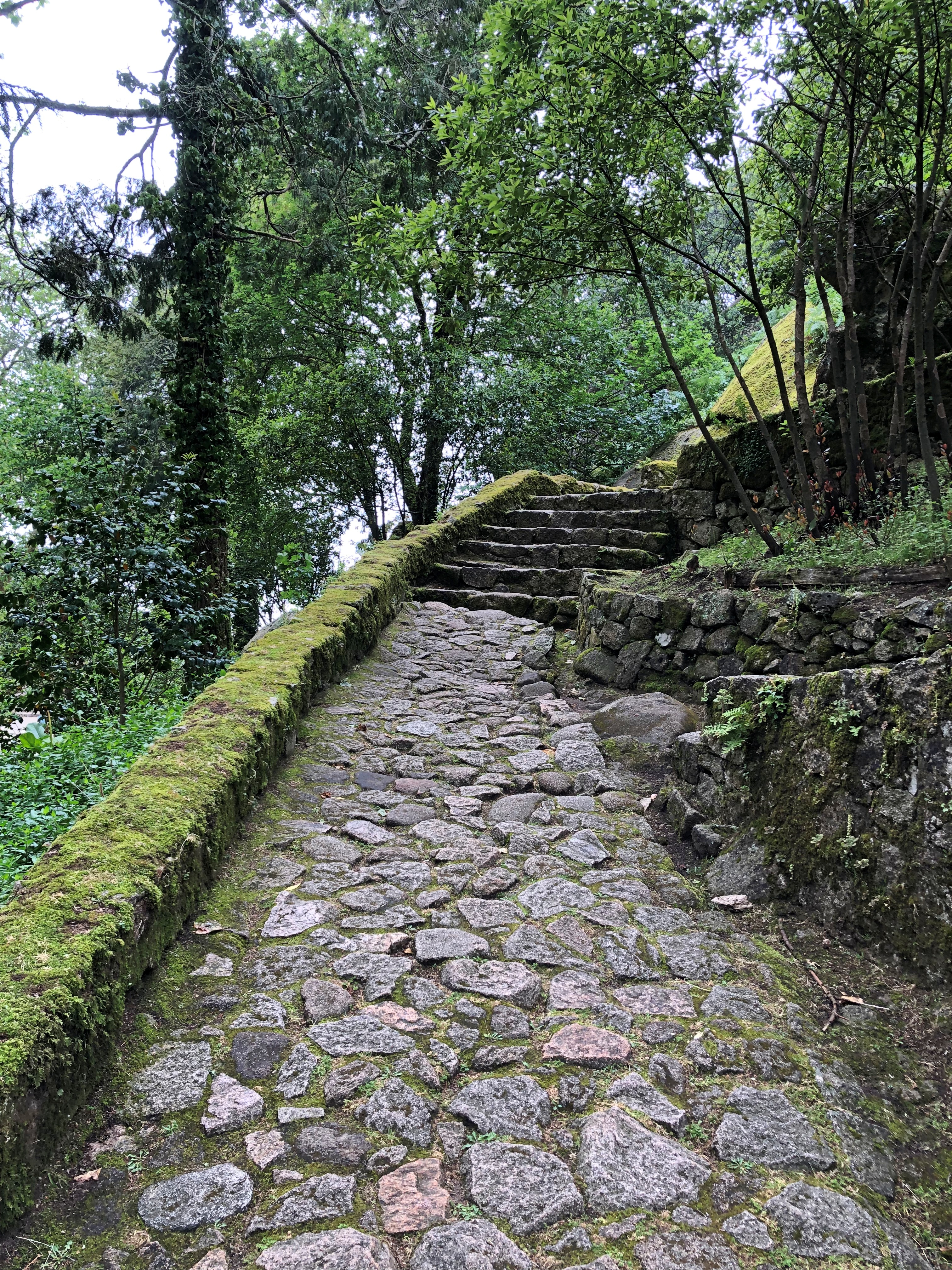
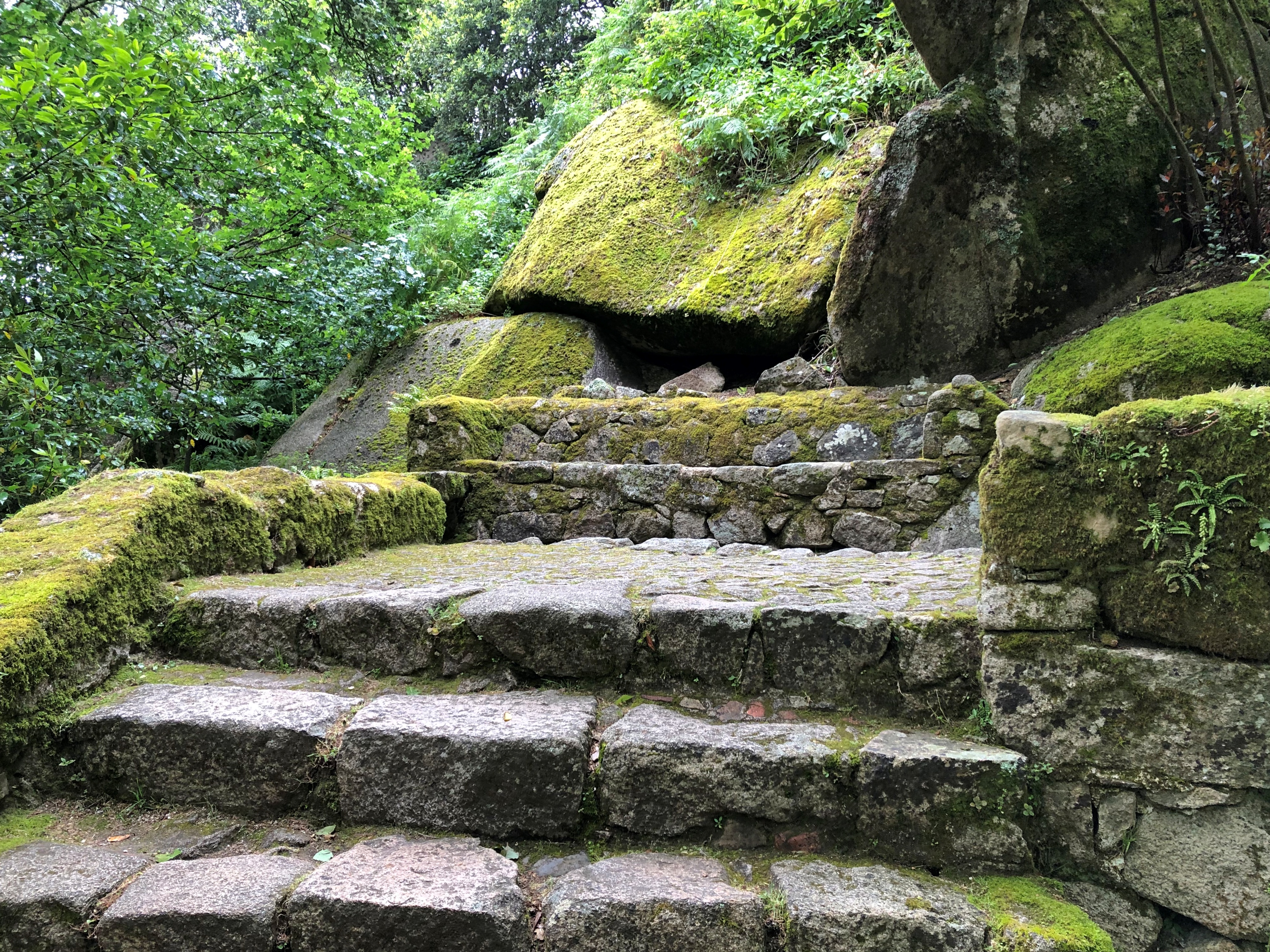
On the way up, we passed a mossy tomb.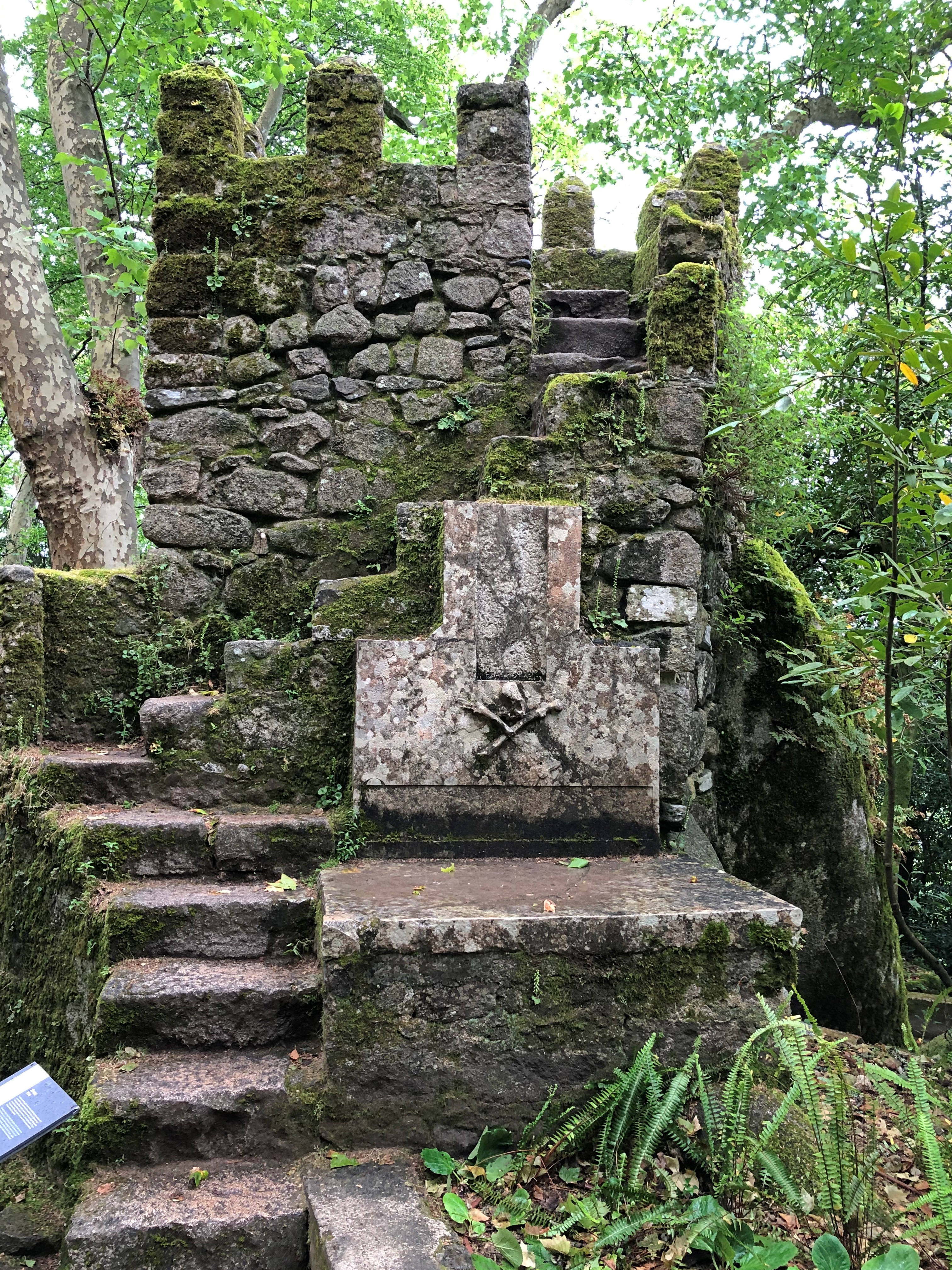
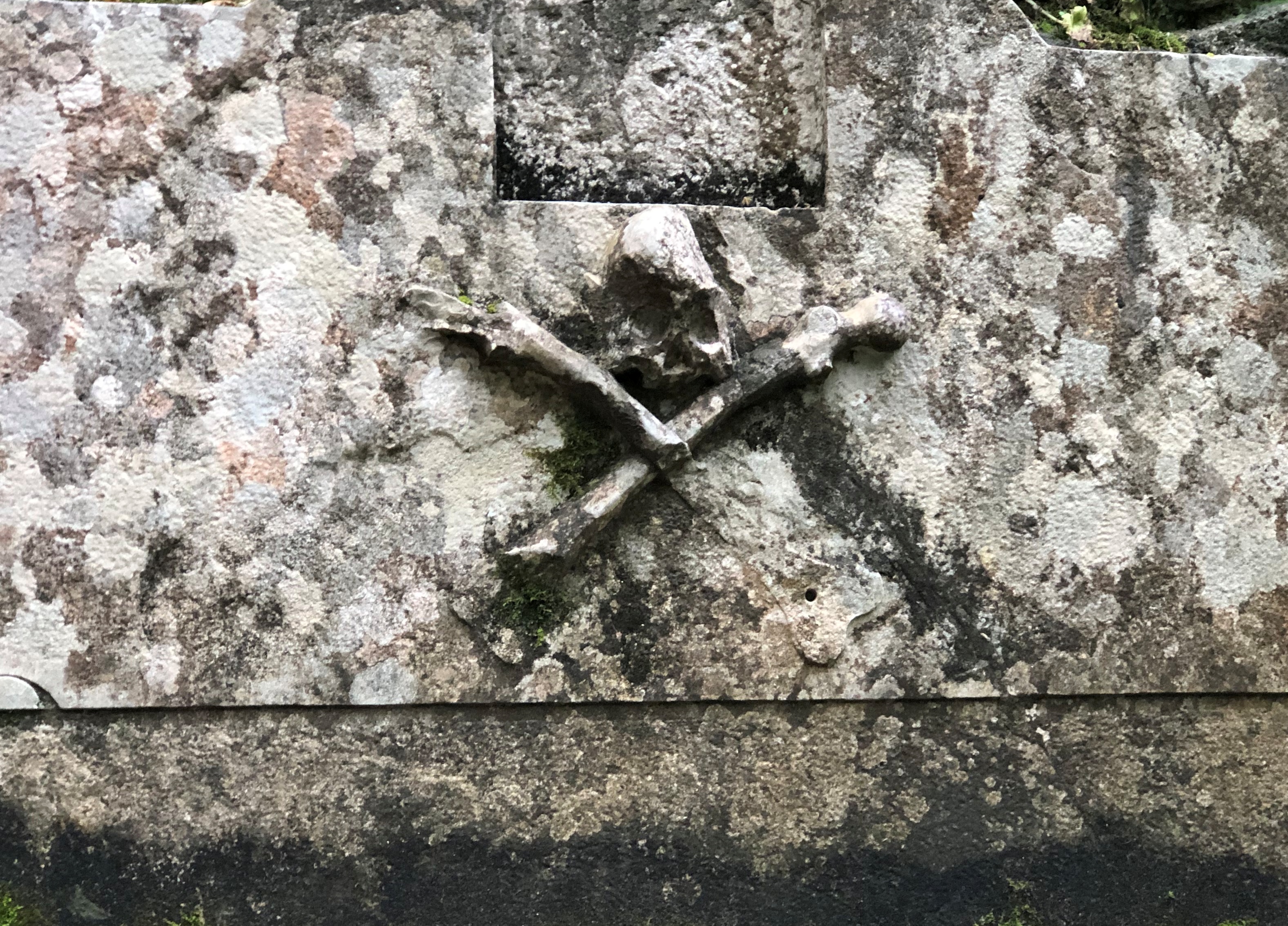
Its sign said (in English, below the Portuguese): “The works promoted by King Ferdinand II damaged part of the Christian necropolis located around the church. A small tomb was thus built to lay the remains that been unearthed. The head stone bore the engraving of a crescent and a cross with the following epitaph: ‘What man has assembled only God can set apart,’ alluding to the fact that it was impossible to distinguish whether the human remains were Christian or Muslim.”
The climb continued. Where were those hiking poles when I needed them? At least one. Back in Illinois, that’s where. But we made it to one of the hilltops, with me trailing about five minutes behind.
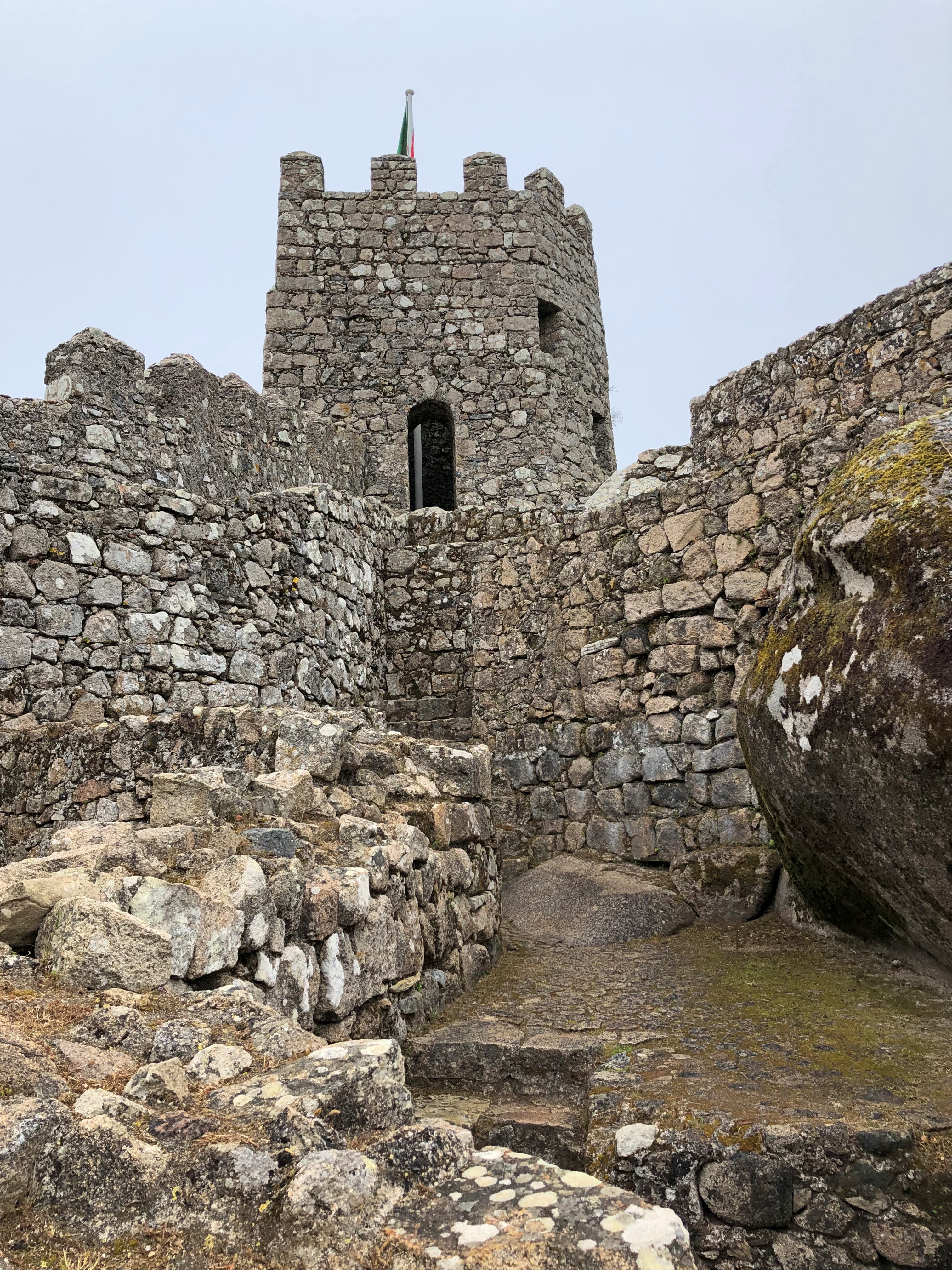

That flag was one of a number flying over the ruins, and I believe it was the 19th-century flag of the kingdom, possibly as a tribute to Ferdinand II. The flag over the highest peak — we didn’t make it all the way up there — seemed to be the first banner of the kingdom, associated with the first king of Portugal, Afonso Henriques, who also happened to take the castle from the Moors.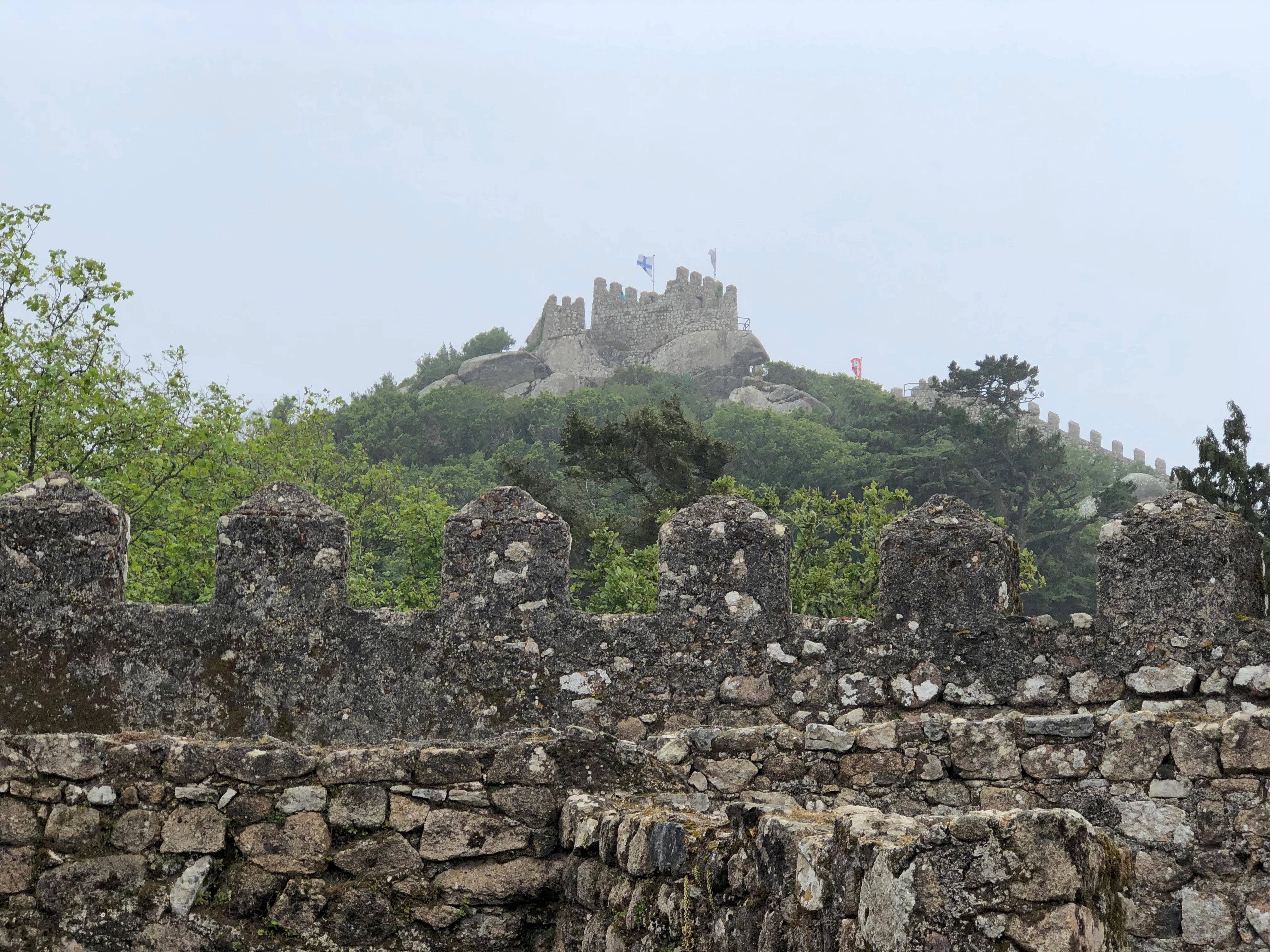
We were tired on the return from the castle, but I have to say that even the stone path and the forest below had its romantic charms, even in the rain. King Fernando was on to something.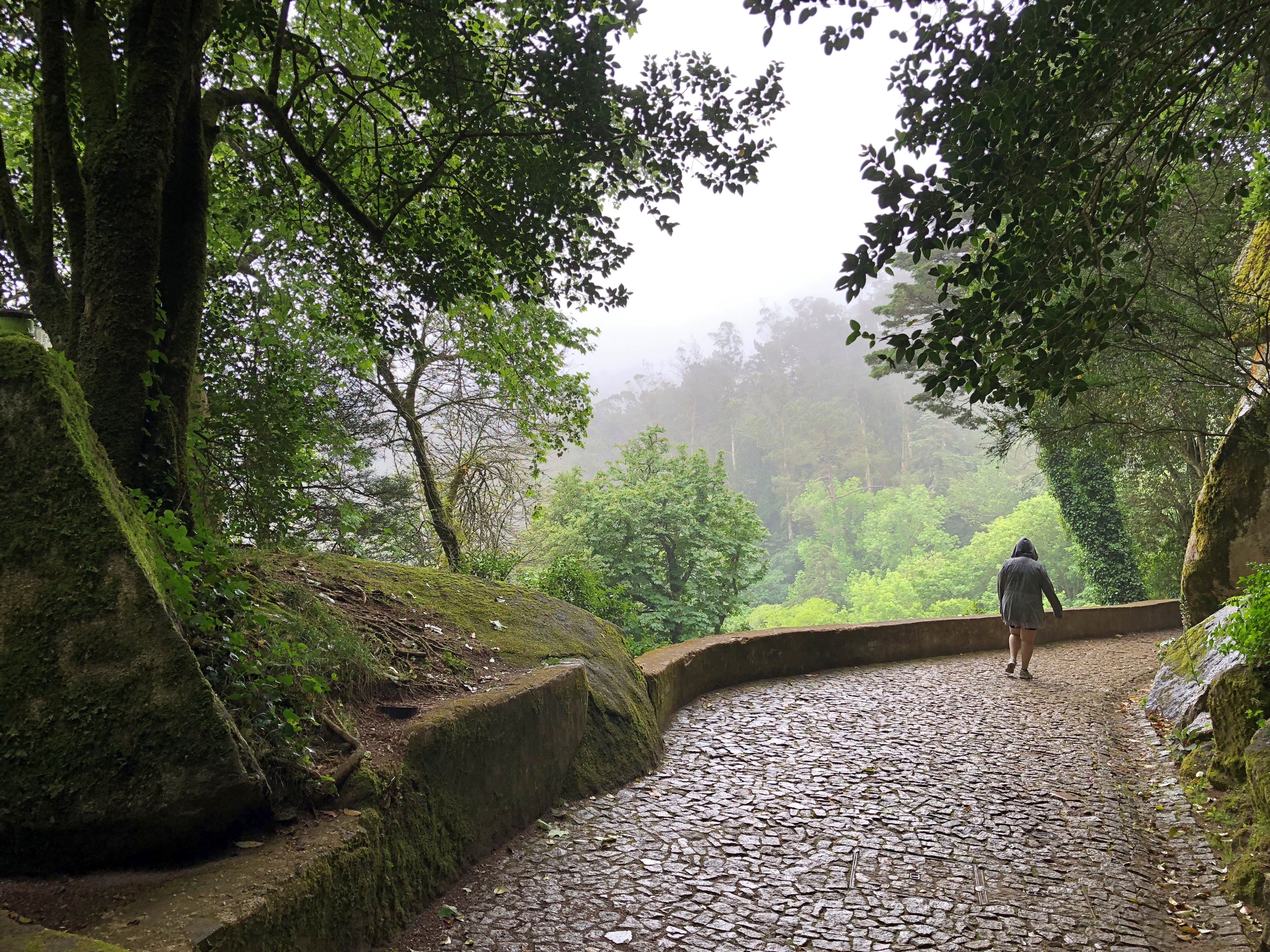

More of a light drizzle most of the time, except for the downpour waiting for the bus back out near the road. The various tuk-tuks and other for-rent vehicles that came by looking for business were tempting, but in the end the bus didn’t take that long. That was the only rain we had during our Portuguese days.